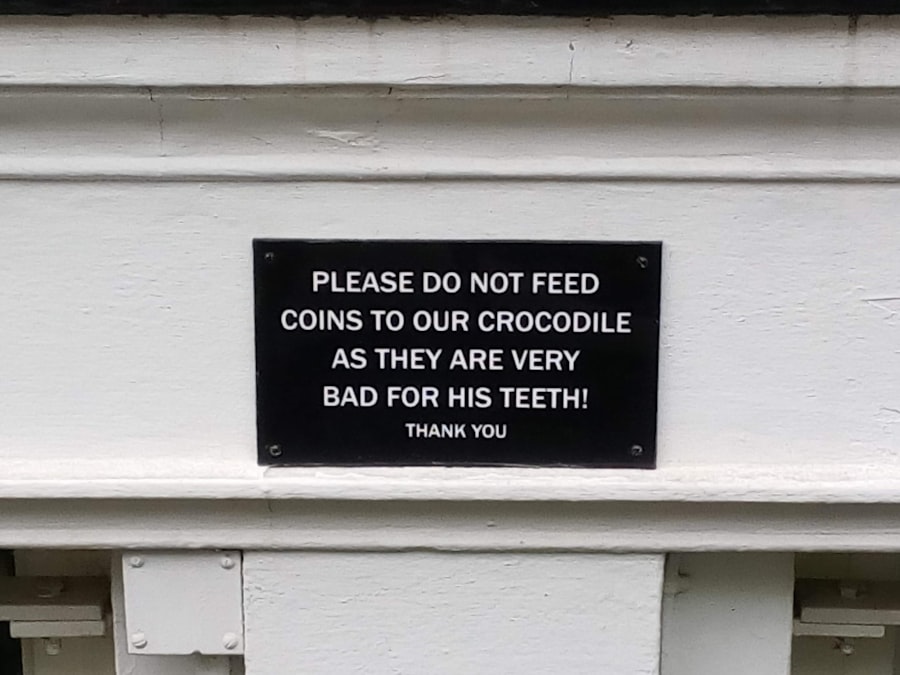To effectively market any service or product, a deep understanding of the target audience is paramount. This involves not only identifying who the audience is but also delving into their preferences, behaviors, and pain points. For instance, in the healthcare sector, understanding the demographics of patients—such as age, gender, socioeconomic status, and geographic location—can significantly influence marketing strategies.
A pediatric clinic would tailor its messaging to appeal to parents, focusing on child health and wellness, while a geriatric practice might emphasize services that cater to older adults, such as chronic disease management or mobility assistance. Moreover, understanding the psychographics of your audience can provide insights into their motivations and values. For example, a wellness center might find that its audience values holistic health approaches and community engagement.
By conducting surveys, focus groups, or utilizing analytics tools, businesses can gather data that reveals not just who their patients are but what drives their decisions. This information can then be used to create targeted marketing campaigns that resonate with the audience on a personal level, ultimately leading to higher engagement and conversion rates.
Key Takeaways
- Identify and understand your target audience to tailor marketing efforts effectively.
- Use social media platforms to increase visibility and engage with potential patients.
- Develop compelling and relevant content to attract and retain audience interest.
- Apply SEO techniques to improve online search rankings and drive organic traffic.
- Utilize email marketing and special promotions to nurture relationships and encourage patient loyalty.
Utilizing Social Media for Marketing
Social media has transformed the landscape of marketing, providing businesses with a platform to connect with their audience in real-time. For healthcare providers, platforms like Facebook, Instagram, and Twitter offer unique opportunities to engage with patients and share valuable information. For instance, a dental practice might use Instagram to showcase before-and-after photos of smile makeovers or share educational content about oral hygiene.
This visual storytelling not only attracts potential patients but also builds trust and credibility within the community. Additionally, social media allows for two-way communication, enabling healthcare providers to respond to patient inquiries and feedback promptly. This interaction fosters a sense of community and loyalty among patients.
For example, a local clinic could host live Q&A sessions on Facebook where healthcare professionals answer common health questions. Such initiatives not only position the clinic as an authority in the field but also encourage patient participation and engagement. Furthermore, leveraging social media advertising can target specific demographics based on location, interests, and behaviors, ensuring that marketing efforts reach the right audience effectively.
Creating Engaging Content

Content creation is at the heart of any successful marketing strategy. Engaging content not only attracts attention but also retains it, encouraging patients to interact with the brand. In the healthcare industry, this could take various forms—blog posts, videos, infographics, or podcasts.
For instance, a wellness clinic might create a series of informative blog posts discussing the benefits of mindfulness and stress management techniques. By providing valuable information that addresses common concerns or interests of their audience, the clinic positions itself as a trusted resource. Moreover, incorporating storytelling into content can significantly enhance engagement.
Sharing patient success stories or testimonials can humanize the brand and create an emotional connection with potential patients. For example, a physical therapy center could feature a video series highlighting patients’ journeys from injury to recovery, showcasing not only the services offered but also the compassionate care provided by the staff. This approach not only informs but also inspires others who may be facing similar challenges, encouraging them to seek help.
Implementing SEO Strategies
| SEO Strategy | Key Metrics | Measurement Tools | Typical Timeframe | Expected Outcome |
|---|---|---|---|---|
| Keyword Research | Search Volume, Keyword Difficulty, CPC | Google Keyword Planner, SEMrush, Ahrefs | 1-2 weeks | Target high-value keywords for content |
| On-Page Optimization | Page Load Speed, Meta Tags, Content Relevance | Google PageSpeed Insights, Screaming Frog | 2-4 weeks | Improved page rankings and user experience |
| Content Creation | Organic Traffic, Bounce Rate, Time on Page | Google Analytics, Ahrefs | Ongoing | Increased engagement and search visibility |
| Link Building | Number of Backlinks, Domain Authority, Referral Traffic | Ahrefs, Moz, Majestic | 3-6 months | Higher domain authority and improved rankings |
| Technical SEO | Crawl Errors, Mobile Usability, Site Architecture | Google Search Console, Screaming Frog | 1-3 months | Better indexing and site performance |
| Local SEO | Local Pack Rankings, Google My Business Views, Reviews | Google My Business, BrightLocal | 1-3 months | Increased local visibility and foot traffic |
| SEO Performance Tracking | Organic Traffic, Keyword Rankings, Conversion Rate | Google Analytics, SEMrush, Google Search Console | Ongoing | Continuous improvement and strategy adjustment |
Search Engine Optimization (SEO) is crucial for ensuring that your content is discoverable by potential patients searching for relevant services online. Effective SEO strategies involve optimizing website content with relevant keywords that align with what your target audience is searching for. For instance, a dermatology clinic might focus on keywords such as “acne treatment,” “skin cancer screening,” or “anti-aging solutions.” By incorporating these keywords naturally into website content, blog posts, and meta descriptions, the clinic can improve its visibility on search engine results pages.
In addition to keyword optimization, local SEO is particularly important for healthcare providers. Patients often search for services in their vicinity; therefore, optimizing Google My Business listings and ensuring consistent NAP (Name, Address, Phone Number) information across online directories can enhance local search visibility. Encouraging satisfied patients to leave positive reviews on platforms like Google and Yelp can also boost credibility and attract new patients.
Furthermore, creating high-quality backlinks from reputable sources can improve domain authority and search rankings over time.
Leveraging Email Marketing
Email marketing remains one of the most effective channels for reaching out to patients and nurturing relationships over time. By building an email list through website sign-ups or patient registrations, healthcare providers can send targeted communications that keep patients informed about services, health tips, and upcoming events. For example, a family practice might send out monthly newsletters featuring seasonal health advice, vaccination reminders, or information about new services offered at the clinic.
Personalization is key in email marketing; addressing recipients by name and tailoring content based on their interests or previous interactions can significantly increase engagement rates. For instance, if a patient has previously shown interest in weight loss programs, sending them personalized emails with tips on healthy eating or information about upcoming weight management workshops can encourage them to take action. Additionally, automated email campaigns can be set up for appointment reminders or follow-up care instructions, ensuring that patients feel supported throughout their healthcare journey.
Offering Special Promotions and Discounts

Promotions and discounts can be powerful tools for attracting new patients and retaining existing ones. Special offers such as discounted initial consultations or referral bonuses can incentivize potential patients to choose your practice over competitors. For example, a chiropractic clinic might offer a “first visit free” promotion to encourage individuals who are hesitant about seeking treatment to give it a try without financial commitment.
Moreover, seasonal promotions can align with specific health awareness months or holidays. A dental practice could run a back-to-school special offering free dental check-ups for children during August when parents are preparing for the new school year. Such promotions not only drive traffic but also create buzz around the practice within the community.
It’s essential to promote these offers through various channels—social media posts, email newsletters, and website banners—to maximize visibility and reach.
Building Relationships with Patients
Building strong relationships with patients is fundamental to fostering loyalty and encouraging word-of-mouth referrals. This begins with creating a welcoming environment where patients feel valued and heard. Training staff to provide exceptional customer service can significantly enhance patient experiences; simple gestures like greeting patients by name or following up after appointments can make a lasting impression.
Engagement doesn’t end after a patient leaves the office; ongoing communication is vital. Regular check-ins via phone calls or personalized emails can show patients that their health matters beyond just appointments. For instance, a mental health practice might send follow-up resources or coping strategies after therapy sessions to support patients in their journey.
Additionally, hosting community events such as health fairs or workshops can further strengthen relationships by providing valuable resources while allowing patients to connect with healthcare providers in a more informal setting.
Monitoring and Analyzing Marketing Efforts
To ensure that marketing strategies are effective and yielding desired results, continuous monitoring and analysis are essential. Utilizing analytics tools such as Google Analytics can provide insights into website traffic patterns, user behavior, and conversion rates. For example, if a healthcare provider notices that a particular blog post is driving significant traffic but not converting visitors into appointments, it may indicate that the call-to-action needs refinement or that additional information is required.
Social media analytics also play a crucial role in understanding audience engagement levels across different platforms. By tracking metrics such as likes, shares, comments, and click-through rates on posts, businesses can identify which types of content resonate most with their audience. This data-driven approach allows for adjustments in strategy—whether it’s focusing more on video content if it garners higher engagement or shifting messaging based on audience feedback.
Furthermore, patient feedback through surveys or reviews can provide qualitative insights into what aspects of the practice are working well and what areas may need improvement. By regularly assessing both quantitative data and qualitative feedback, healthcare providers can refine their marketing efforts to better meet the needs of their target audience while enhancing overall patient satisfaction and loyalty.


